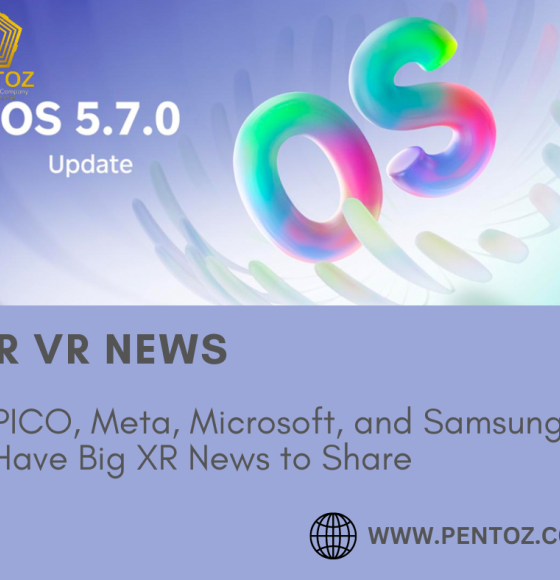This past week provided some useful information on the state of XR headsets.
It appears that MR technology could take the lead in this regard. Even though they are pricey, MR headsets give users the ability to use both AR and VR applications on the same machine. MR headsets integrate AR/VR/MR applications as a result, allowing users to use them all without having to purchase additional hardware.
To offer a user-friendly and feature-rich smartphone, companies like Apple and Meta are investing in MR. But MR has already arrived. Companies like Microsoft and PICO are enhancing their current MR capabilities to solidify their position as leaders in the device race.
PICO enhances the features for MR and hand-tracking.
To support its cutting-edge, superior technological offerings, PICO this week released an OS version 5.7 upgrade for its PICO 4 and Neo 3 Link products.
The hand-tracking input capabilities of PICO’s new OS have been fundamentally improved, with “comprehensively upgraded” hand-tracking-based interactions employing “improved smart algorithms.” The controller-less inputs for the OS’s product are more accurate and steady because the sophisticated algorithms decrease tracking defects such virtual hand jitter and flicker.
The update also enhances some of the devices’ MR features, starting with the Mixed Reality Capture app’s usability by adding an indicator that shows when a user starts a recording.
The company is also releasing two upgrades that are available only for PICO 4 devices. These updates improve text clarity on the device’s Room Capture page as well as provide users the option to scan and link bank cards using the device’s Seethrough Mode.
When other future headsets from companies like Apple and Meta offer comparable technology, PICO is improving its hand-tracking and MR features. This is forcing XR headset makers to improve MR offerings when the technology becomes widely used in 2024.
Why Quest’s reach is constrained, according to Meta CTO
This week, Meta CTO Andrew Bosworth discussed the Meta Quest Portfolio’s current state once more.
Bosworth provided an explanation of the Quest’s restricted availability during his online Q&A session.
The CTO also mentioned the impact of overhead on regional availability. For us to seriously invest at this early stage, Bosworth said that some markets are “too small [and] too underdeveloped, relative to the price of the device.”
He noted that other nations, particularly those in Latin America, would make the headset too expensive for Meta’s target population to afford. No country in Latin America now sells the Quest 2 or Quest Pro.
Bosworth added that political factors also affect where Meta launches items, in addition to the challenges of getting the headset in new nations.
Are We Any Closer to the HoloLens 3?
A long-rumored forthcoming MR tool for business application is the HoloLens 3.
Microsoft has submitted a patent request for a lightweight, modular MR device that would provide enterprise end customers better usability and form factors.
The head-mounted device patent from Microsoft also mentions a “rigid frame and front and back visor lens” with integrated sensors, waveguide optics, display/projection devices, and dimmable displays, as well as additional accessories like a “headband, VR headset, glasses temples, helmet,” and a “rear-attachment module may be provided that can provide auxiliary compute, storage, and power resources.”
The major upgrades, such as a lightweight construction, a modular frame, and a dimmable display, however, are compatible with the HoloLens 3’s IVAS military-grade XR device and may be a portent of things to come.
Military personnel are using the updated model of the headset in the field as part of an important testing phase for the IVAS headset. Small enhancements made in the most recent edition, comparable to those described in the patent, may point to characteristics in a future HoloLens product, such as device visibility at night, weight, and form factor.
Samsung Reveals MR Headset Details
The information reveals that the future headset’s built-in external cameras, tracking, and sensor devices will support MR applications.
Samsung’s MR device will reportedly cost somewhere between $100 and $2,000, according to the sources.
The announcement comes as Samsung makes significant investments in microdisplay technology in an effort to “secure” leadership in the future of XR. For instance, Samsung paid 290 billion Won to acquire Imagine, a pioneer in microdisplay technology; the company is awaiting merger clearances from several national authorities, and it expects to start realizing capital returns in October of this year.

















